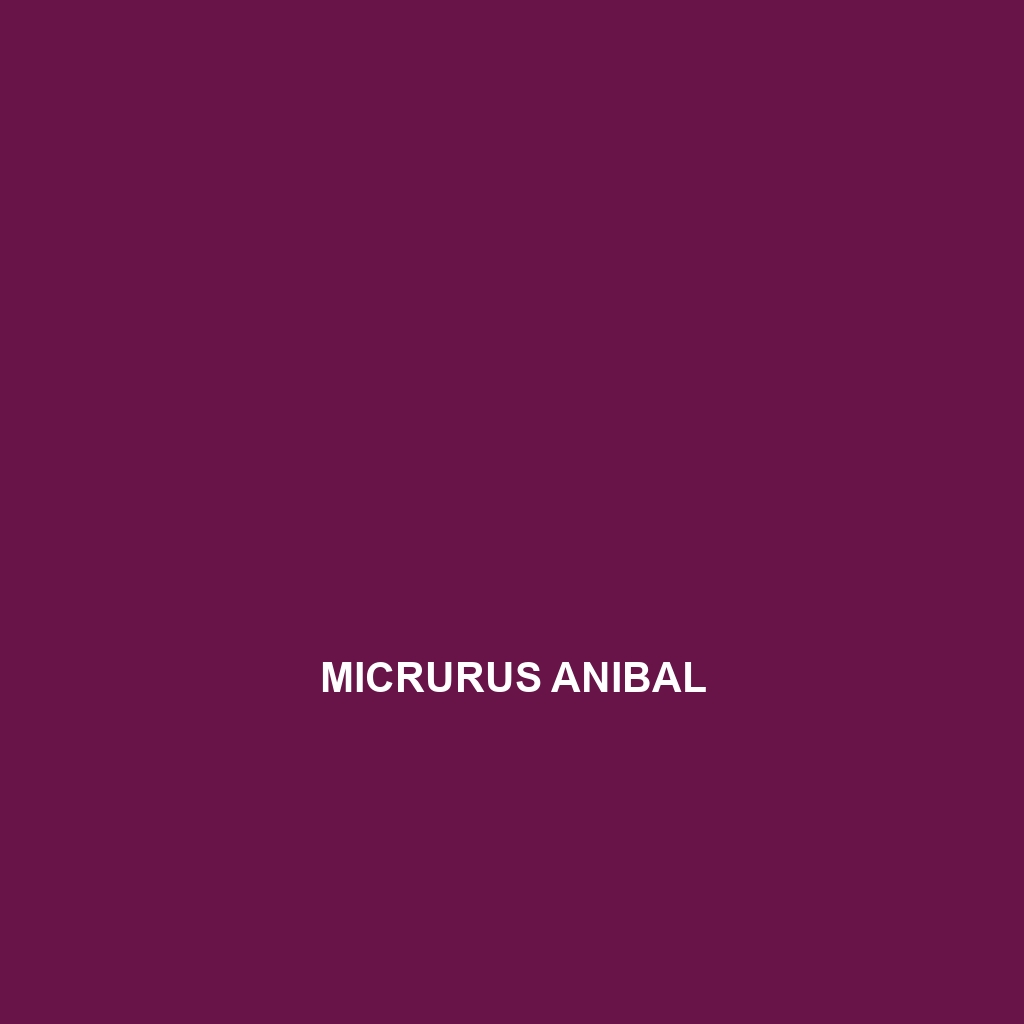Common Name
Micrurus anibal
Scientific Name
Micrurus anibal
Habitat
The Micrurus anibal, commonly known as Anibal’s coral snake, primarily inhabits the tropical regions of Central and South America. This striking species can be found within lush rainforests, sprawling savannas, and temperate forests. Its preference for humid environments suggests a strong dependency on ecosystems rich in biodiversity, particularly areas with dense foliage where it can effectively hunt for its prey while remaining concealed from predators. These snakes demonstrate a remarkable adaptability to varying elevations, often residing between 300 to 1,200 meters above sea level, thriving in areas with consistent rainfall and moderate to warm temperatures.
Physical Characteristics
The Micrurus anibal is a medium-sized snake, reaching lengths of up to 1.2 meters (approximately 4 feet). This species is easily identifiable by its vibrant coloration: bright red bands alternating with black and yellow bands, a hallmark of the coral snake family. The unique color pattern serves as a warning to potential predators about its venomous nature. Its slender, elongated body, along with its distinctive pseudo-hexagonal scales, further highlights its resemblance to other species within the Micrurus genus. Juveniles usually exhibit duller colors before maturing into their characteristic bright patterns, making this species captivating for both researchers and snake enthusiasts alike.
Behavior
The Micrurus anibal displays primarily nocturnal behavior, making it most active during the twilight hours of dusk and dawn. This behavior aids in reducing exposure to predators and enhances hunting success. Socially, Anibal’s coral snake is relatively solitary, coming together only during the breeding season. During this time, males engage in intricate mating rituals that involve wrestling and displays of strength. Following mating, females exhibit a strong maternal instinct, often seen seeking safe locations to lay their eggs, which can number anywhere between 6 to 12 per clutch.
Diet
As a carnivore, the diet of Micrurus anibal includes small reptiles, particularly lizards, as well as other smaller snakes. With a highly developed sense of smell, facilitated by its forked tongue, this snake can sense its prey even in dense foliage. Its venomous bite allows it to immobilize prey rapidly, making it an efficient hunter. Adults typically do not have many natural predators due to their venomous reputation; however, they must remain cautious of larger birds of prey and mammals that could prey upon them.
Reproduction
The reproductive cycle of the Micrurus anibal is fascinating and generally occurs during the warmer months when environmental conditions are most favorable. Mating season typically begins during the early spring. The gestation period for this species lasts approximately 60 to 70 days, after which the female lays eggs in hidden and secure locations. Offspring are born fully formed and are independent from birth, requiring no parental care. This reproductive strategy allows for a greater survival rate among the young, as they must quickly adapt to their environment.
Conservation Status
The Micrurus anibal is currently listed as vulnerable due to habitat destruction and fragmentation caused by urban development and agricultural expansion. Conservation efforts are underway to protect its natural habitat, emphasizing the importance of rainforest conservation initiatives. Education programs that inform local communities on the ecological significance of this species are also vital in promoting coexistence and increasing awareness related to biodiversity preservation.
Interesting Facts
One of the most captivating aspects of Micrurus anibal is its ability to adapt to varying environmental conditions, showcasing a remarkable evolutionary resilience. Additionally, the legend surrounding coral snakes often evokes curiosity due to their striking appearance and potent venom. Unlike many species, the venom of Anibal’s coral snake, although dangerous, is not typically life-threatening to humans if treated promptly. The unique coloration of Micrurus anibal provides an excellent example of aposematism, where bright colors serve as a warning to potential predators.
Role in Ecosystem
As a predator, the Micrurus anibal plays a crucial role in controlling populations of smaller reptiles and prey species within its ecosystem. This balance helps maintain biodiversity and contributes to the overall health of habitats in which it resides. Additionally, by participating in the food web as both a predator and prey, Anibal’s coral snake is integral to ecological interactions. The presence of healthy coral snake populations is often indicative of a thriving ecosystem, highlighting their importance as a keystone species in their respective environments.
